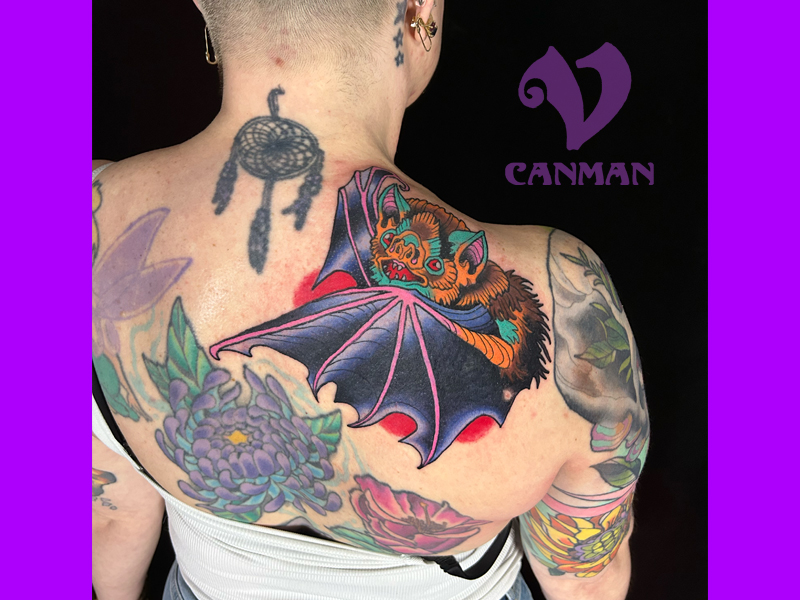This Full color Bat tattoo worked well as a cover up.
Canman designed the wings in the bat as the cover area.
The design naturally moves and flows inward from her shoulder blade to the spine.
Illustrative color tattoos like this is a favorite of Canman.
Are you looking for your own unique version of a Bat tattoo?
Go to our Tattoo Request Form to get your tattoo project started!!
About Bats
Bats are fascinating creatures!
They’re the only mammals capable of sustained flight.
This is due to their modified forelimbs forming wings.
There are over 1,400 species of bats.
As a result, making up about 20% of all mammal species.
They come in various sizes.
Sizes range from tiny bumblebee bats weighing just a few grams.
to the large flying foxes with wingspans of up to six feet.
Bats play crucial roles in ecosystems worldwide.
They are major pollinators and seed dispersers.
Therefore, vital for the health of many plant species, including those important for human food crops.
Most bats use echolocation to navigate and hunt for prey in the dark.
They emit high-frequency sound waves and listen to the echoes to determine the location, size, and shape of objects around them.
Bats have diverse diets.
Diets include insects, fruits, nectar, small mammals, fish, and even blood (in the case of vampire bats).
Their diet varies based on the species and availability of food in their habitat.
Bats roost in a variety of places, including caves, trees, buildings, and even underground tunnels.
Some species form large colonies, while others are solitary or roost in small groups.
Some bats hibernate during the winter months, while others migrate to warmer climates.
Hibernation helps them conserve energy when food is scarce.
Bats can live for surprisingly long periods.
Some species reaching ages of over 30 years in the wild.
Many bat species face threats such as habitat loss, pesticide use, climate change, and diseases like white-nose syndrome.
Conservation efforts are crucial to protect these valuable animals and maintain healthy ecosystems.
